In March, we covered the Supermicro IP65 Edge Servers for 5G Telco Poles Launched. That was a piece that, I must admit, I was wrong about. I am generally fairly good at guessing traffic each STH article will generate yet this piece did much better in terms of traffic than I thought it would. STH has many readers that work in the service provider space, so news of the Supermicro Outdoor Edge System that is IP65 rated and pole mountable was very popular. During our day of filming at Supermicro headquarters, I saw the unit and realized we must get a look since the stock photos we had for the original piece did not provide a lot of detail.
Video Version
This is part of our visit to the Supermicro HQ post-lockdown series. We previously looked at the Supermicro 3rd Gen Xeon Scalable Server which we showcased alongside the Cooper Lake launch. We also looked at the Simply Double, 1U EDSFF, and the company’s new 60-Bay Top Loading Storage Server. As a part of that series, we have an accompanying video:
We are going to have more detail in this article, but want to provide the option to listen. As a quick note, Supermicro filmed the video bits at their HQ, provided the systems in their demo room, and their product managers that were able to make it. We did a whole series but are tagging this as sponsored since we relied upon their facilities instead of our own. I was able to pick the products we would look at and have editorial control of the pieces (nobody is reviewing these pieces outside of STH before they go live either.) In full transparency, this was the only way to get something like this done, including looking at a number of products in one shot, without going to a trade show during shelter-in-place. Look for more in this series coming to STH over the coming weeks.
IP65 Rated Supermicro Outdoor Edge System
The IP65 Rated Supermicro Outdoor Edge System is designed to operate from poles. Poles are popular in the telecom service provider industry primarily to give line of sight to a broader area. They also utilize a minimal amount of ground footprint which means they are easier to deploy. Poles can be erected in the open, as well as on buildings making them very flexible. As we move into the 5G era, a lot of industry focus is on how to get compute to the edge which often means putting it on a pole.
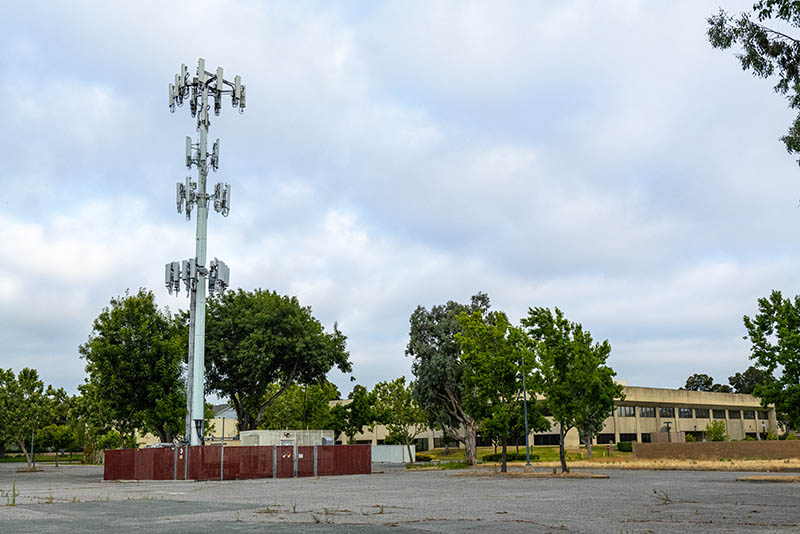
That is the idea behind the Supermicro Outdoor Edge System which is an IP65 rated server designed for pole mounting. We are not going to get into the full specification, but since many call this the “Supermicro IP65 server”, IP65 describes some of the waterproofing features of the system and is not the model name.
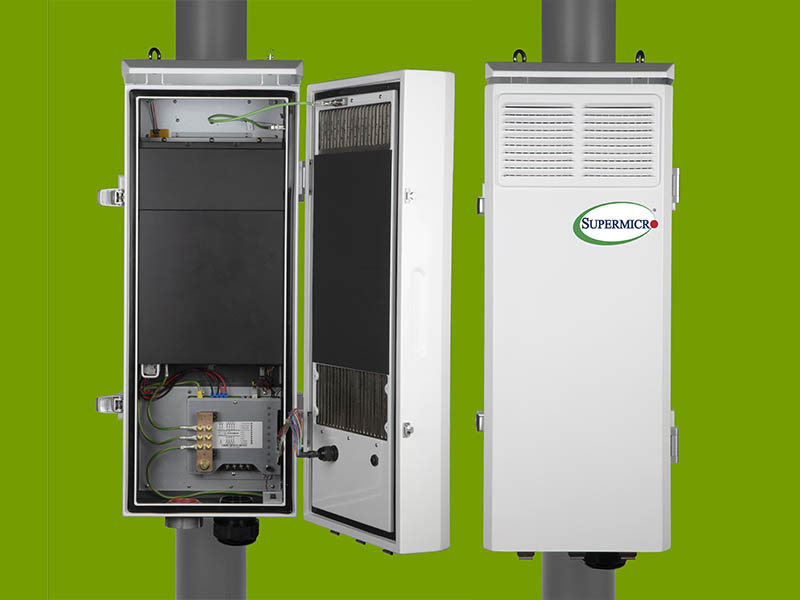
At Supermicro, this solution is mounted on its own pole in the demo room. We had the opportunity to open the system up and see what is inside.
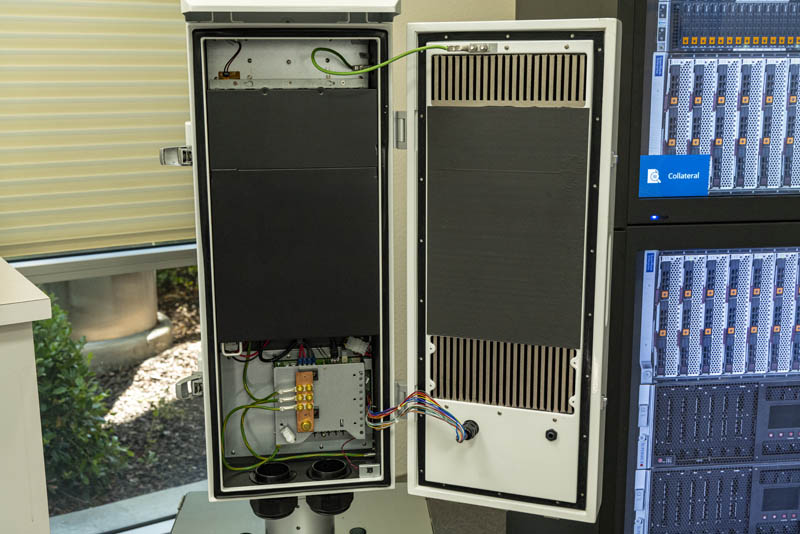
First off, something that was a bit surprising is that the hinges and latches were heavy duty. Working on servers all the time, this is a completely different level of hinge/ latch design than we are accustomed to.
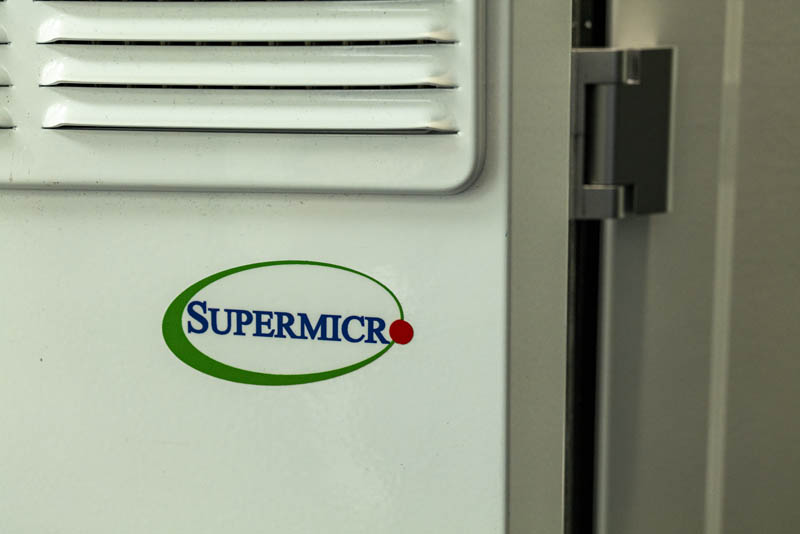
One will notice there is a vent on the front side of the cover. This may seem like a small metal cover, but it is not. Instead, this is a heavy door with a purpose. Inside the door, we have fans and a heat exchanger designed to remove heat from the server. This is especially important in hot environments.
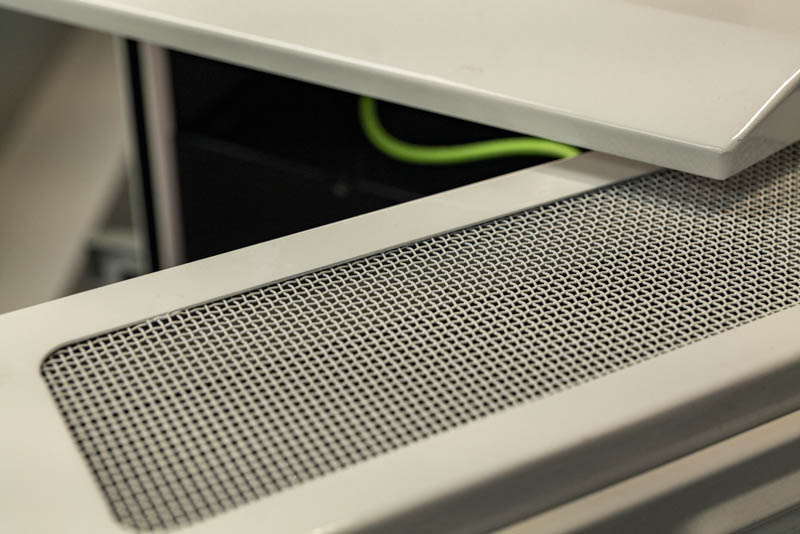
Fans are also found atop the Supermicro SYS-E403 server inside that we will get to soon. However, we wanted to note that there is actually a thermal blanket in the server that can heat the system so it remains at operating temperatures even in cold environments. Part of being deployed outdoors is that a server may need to cope with extreme heat and cold while still operating reliably.
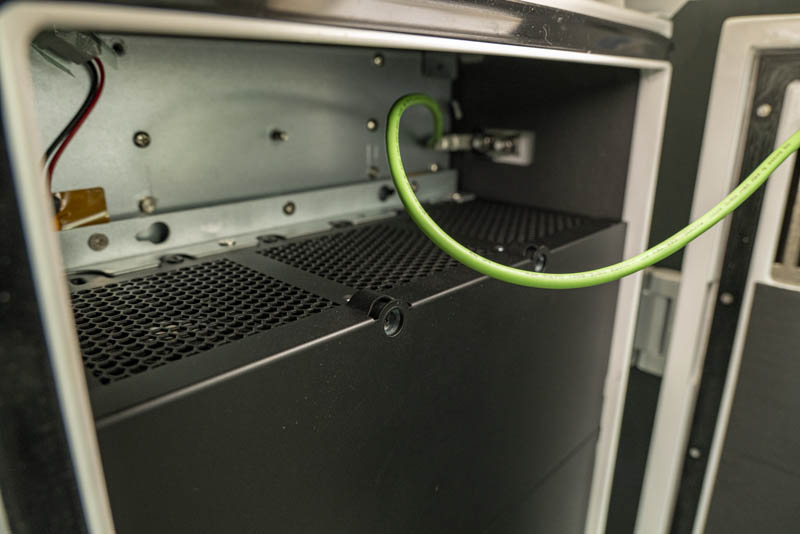
We are going to cover the SYS-E403 server later in this article since it is hard to see when it is mounted. Instead, we are going to focus on the wires from the heat exchanger door to the main section. There are active components such as fans in the door which means there is wiring that goes between the two sections. Perhaps the heart of the solution is the control board that can help distribute power as well as provide diagnostic information. The vertical column of LEDs is status LEDs to assist a service technician in diagnosing the system in a field. Since remote diagnosis is often done on elevated platforms servicing a system is costly and making it easy to quickly and accurately diagnose a system for repairs on-site is important.
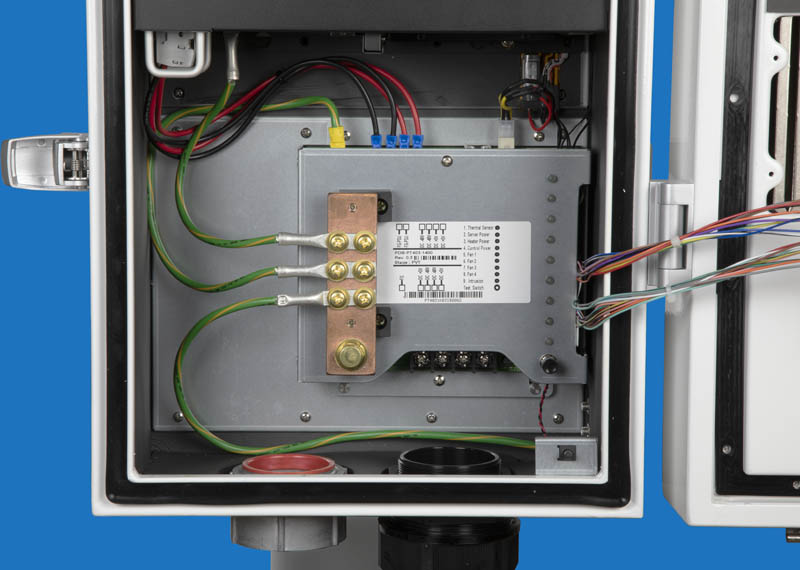
One will also notice that there are redundant DC power supplies. DC power is popular for these pole-mounted systems so this is an important feature. One can see the server I/O, however, we wanted to get a better look at the rear I/O so we found a SYS-403 in the demo room to look at outside of the system.
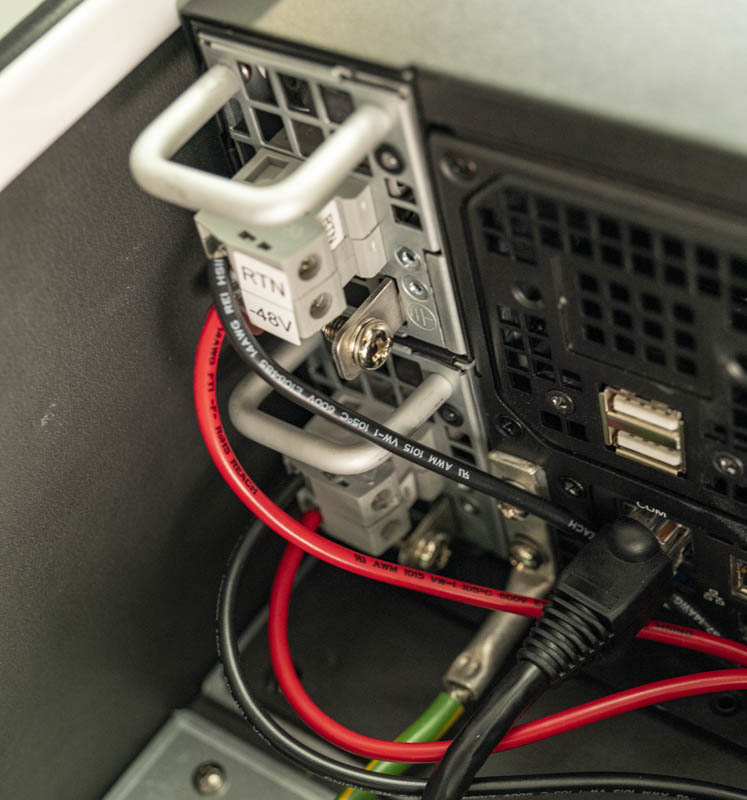
This is a SYS-E403 server that we found in the demo room. As one can see, this particular unit is using a single AC power supply. Supermicro also has redundant AC options. One can see that there is a big I/O array. There are two 10Gbase-T ports, two SFP+ ports, 9x 1GbE ports (the 9th is for management), and an IPMI port. Rounding out the I/O we have two USB 3.0 ports, a VGA port, a RJ45 COM port and then the power button and status LEDs. Remember, the other side of the chassis is completely dedicated to an array of redundant fans.
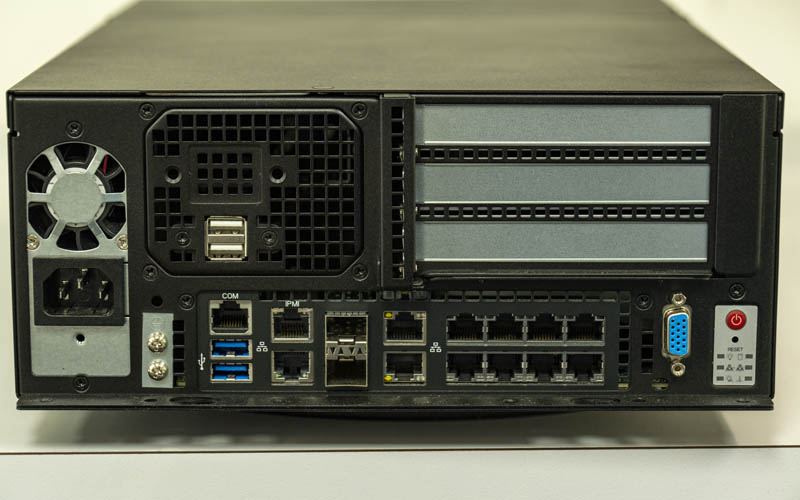
The server we saw is utilizing an Intel Xeon D-2173IT (14 core/ 28 thread) 70W TDP SoC. With four DIMM slots, it can handle up to 512GB of RAM (4x 128GB LRDIMMs.) Expansion wise there are four Internal 2.5″ drive bays. One also gets an array of PCIe slots via risers that can be customized depending on the need with GPUs, NICs, FPGAs, and other ASICs.
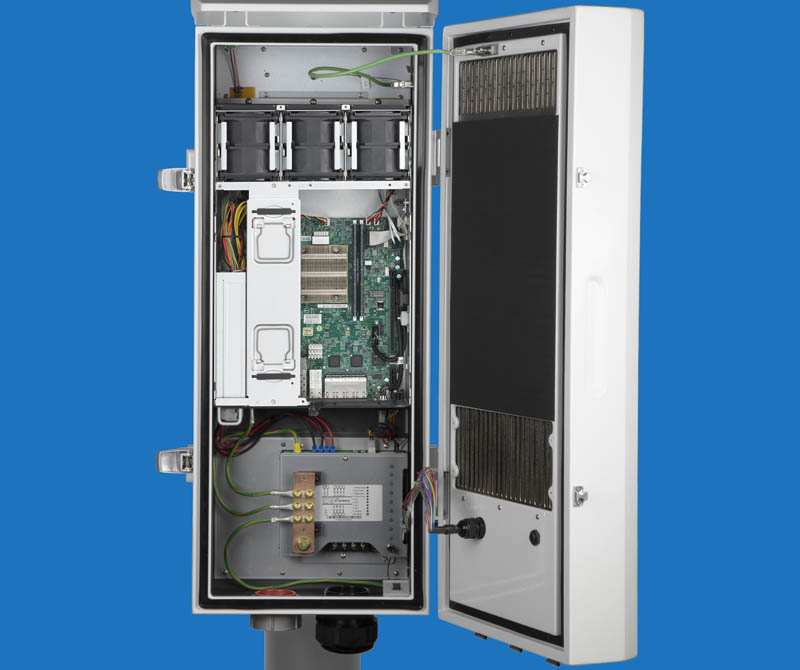
If you want to see more on the Supermicro SYS-E403 system, including some internal views, check out our Supermicro Embedded Products at Computex 2019 article. One can tell that Supermicro is building the SYS-E403 in its typical building block fashion. While the server we saw is Xeon D-2100 series based, it is easy to see how this could be tailored both on the internal SKU as well as using other processors depending on what a customer needs.
Final Words
When seeing the initial photos at the launch, my impression was that this utilized thin sheet metal to cover a server. That impression was completely false. Instead, the system was surprisingly robust and had features, such as the heating element, that I was not expecting to see.
We discussed a bit about the 5G infrastructure pole deployments, but there is another one as well. Specifically, for those who are looking to deploy cameras and then do video analytics at the edge, this server can handle not just networking cards in its expansion slots, but also FPGAs, dedicated ASIC cards, and GPUs. One could use this server, for example, on the same pole as cameras and then use the server to find important events captured and only send relevant information via an expensive uplink for further action.
Overall, this was a very exciting system to get to see in-person. Since we had a lot of readers interested in this solution when Cliff did his piece, it is an important one for us to follow-up on. Since there will be few 2020 trade shows, hopefully, this helps our readers get a glimpse into the system that they may not be able to see otherwise.

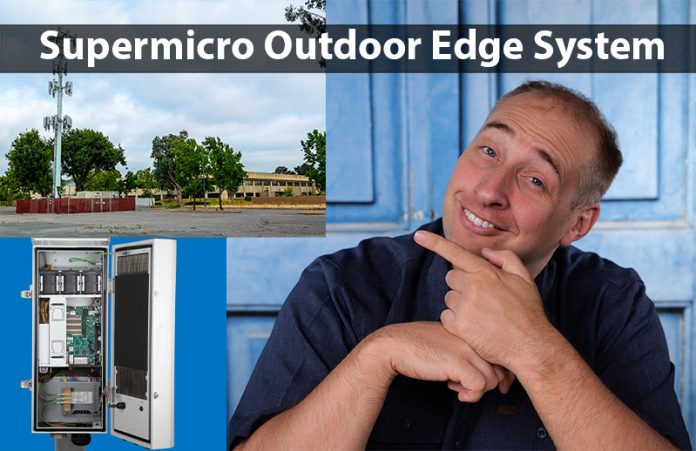
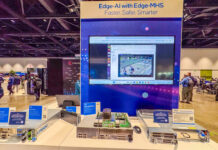


Boxes full of Xeons for outdoor installation mifht sell very well up here in Canada, particularly in the winter. Could be effective as a method of melting a lot of snow and ice without resort to salt or urea or other chemicals.
Maybe you can’t do 5G but ya should do video analysis platform on a pole
Literally low hanging fruits for physical attack by enterprising outdoor hackers.
Why do one need a Xeon on a pole?
Patrick, if you have any aversion to heights, there are floor standing chassis available from many sources, example: https://www.delvallebox.com/en/stainless-steel-enclosures/workstation-hmis-stainless-steel-computer-enclosure-workstation-hmis
A future customer might ask about such a thing.